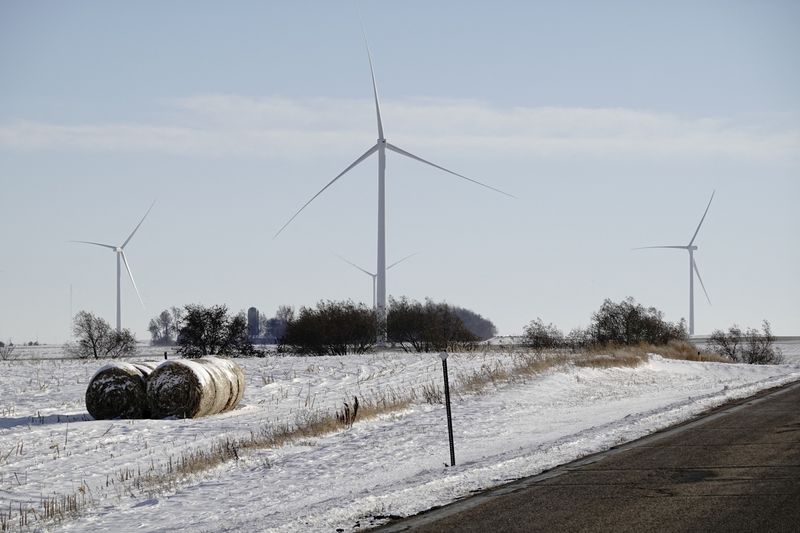
© Reuters. FILE PHOTO: Acciona Windpower 1.5 MW wind turbine generators are seen on Tatanka Wind Farm as the coronavirus disease (COVID-19) outbreak continues in Brandt, South Dakota, U.S., October 27, 2020. REUTERS/Bing Guan/File Photo
EQNR
-1.36%
Add to/Remove from Watchlist
Add to Watchlist
Add Position
Position added successfully to:
Please name your holdings portfolio
Type:
BUY
SELL
Date:
Amount:
Price
Point Value:
Leverage:
1:1
1:10
1:25
1:50
1:100
1:200
1:400
1:500
1:1000
Commission:
Create New Watchlist
Create
Create a new holdings portfolio
Add
Create
+ Add another position
Close
BP
-0.32%
Add to/Remove from Watchlist
Add to Watchlist
Add Position
Position added successfully to:
Please name your holdings portfolio
Type:
BUY
SELL
Date:
Amount:
Price
Point Value:
Leverage:
1:1
1:10
1:25
1:50
1:100
1:200
1:400
1:500
1:1000
Commission:
Create New Watchlist
Create
Create a new holdings portfolio
Add
Create
+ Add another position
Close
ORSTED
+3.37%
Add to/Remove from Watchlist
Add to Watchlist
Add Position
Position added successfully to:
Please name your holdings portfolio
Type:
BUY
SELL
Date:
Amount:
Price
Point Value:
Leverage:
1:1
1:10
1:25
1:50
1:100
1:200
1:400
1:500
1:1000
Commission:
Create New Watchlist
Create
Create a new holdings portfolio
Add
Create
+ Add another position
Close
(Reuters) – The global wind power sector will add less capacity in the next decade than previously expected due to financial trouble in the U.S. offshore wind industry and sluggish approval and project execution in China, consultancy Wood Mackenzie said on Tuesday.
Orsted (CSE:ORSTED), the world’s largest offshore windfarm developer, energy giants BP (NYSE:BP) and Norway’s Equinor have booked hundreds of millions of dollars worth of impairments on their U.S. offshore wind power portfolios, citing spiralling financing costs and supply delays.
Wood Mackenzie cut by 29 gigawatts (GW) its forecast for global wind power capacity by end-2032, downgrading cumulative installed capacity to 2.35 terawatts.
The downgrade makes up less than a 2% change in expected capacity, with more than 80% of the cut stemming from headwinds including in key markets like the United States and China.
“Long-term market fundamentals remain strong globally despite near-term challenges in project execution in China and offshore market maturation in the U.S.,” said Luke Lewandowski, Vice President, Global Renewables Research at Wood Mackenzie said in a statement.
Orsted’s cancellation of its Ocean Wind project in New Jersey and supply chain issues are expected to push nearly 8 GW of U.S. offshore projects beyond 2032, WoodMac said. This means that the United States will reach around half of its goal to install 30 GW of offshore wind by 2030.
WoodMac said near-term headwinds from a slow Chinese project market led to its 12 GW reduction in the global wind capacity forecast due to tightened permit requirements and project cancellations, but China’s onshore wind outlook from 2026 to 2032 remained unchanged despite the short-term challenges.
Source: Investing.com




























